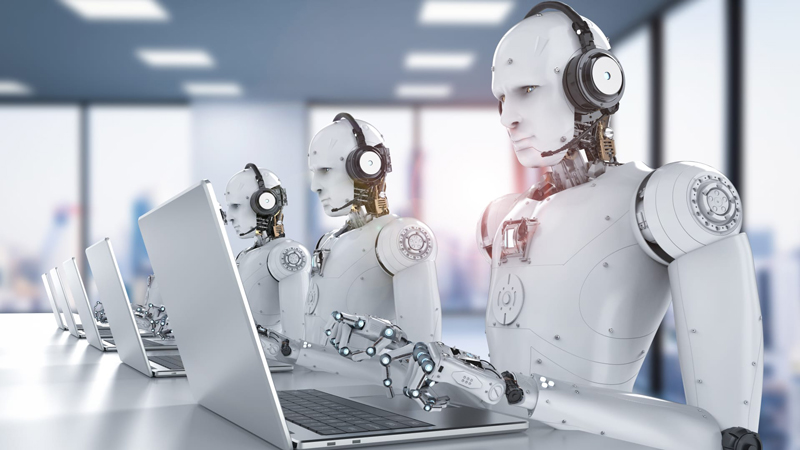Robots have long fascinated humans with their ability to perform tasks autonomously. Over the years, advancements in technology have propelled the field of robotics to new heights, revolutionizing various industries and transforming the way we live and work. In this article, pacificconnectionsusa.net will explore the rise of robotics, delving into its applications, impact, and future possibilities.
The rapid development of robotics has brought forth a multitude of opportunities and challenges. With machines becoming more intelligent and capable, the field of robotics has witnessed tremendous growth and expansion. This article aims to provide an in-depth exploration of robotics, highlighting its various applications across diverse sectors.
Understanding Robotics
Robotics is an interdisciplinary field that encompasses the design, development, and application of robots. A robot is an autonomous or semi-autonomous machine that can perform tasks with varying degrees of complexity. It combines various technologies, such as artificial intelligence (AI), computer vision, and mechanical engineering, to enable machines to perceive, interact, and manipulate their environment.
Historical Milestones
Throughout history, there have been significant milestones that have shaped the field of robotics. From the invention of the first industrial robot by George Devol in 1954 to the development of humanoid robots capable of human-like movements, each achievement has propelled robotics forward.
Robotics in Manufacturing
One of the earliest and most prominent applications of robotics is in the manufacturing industry. Robots have revolutionized assembly lines, increasing efficiency, precision, and productivity. They can perform repetitive and dangerous tasks, freeing human workers to focus on more complex and creative endeavors.
Robotics in Healthcare
In recent years, robotics has found its way into the healthcare sector, enhancing patient care and medical procedures. Surgical robots enable surgeons to perform minimally invasive surgeries with greater precision and reduced recovery times. Additionally, robotic exoskeletons assist in rehabilitation therapy, helping patients regain mobility and independence.
Robotics in Agriculture
The agricultural industry has also embraced robotics to optimize farming practices. Autonomous drones and robots equipped with advanced sensors and AI algorithms can monitor crops, detect diseases, and apply targeted treatments. This technology improves crop yield, reduces waste, and minimizes the need for manual labor.
Robotics in Space Exploration
Robots have played a vital role in space exploration, enabling us to gather valuable data and push the boundaries of scientific knowledge. Robotic rovers, such as the Mars rovers, have traversed distant planets, collecting samples and transmitting crucial information back to Earth. These robots act as our eyes and hands in the vastness of space.
Robotics in Education
The integration of robotics in education has revolutionized the way students learn and engage with STEM subjects. Educational robots provide hands-on experiences, fostering critical thinking, problem-solving, and creativity. They encourage students to explore complex concepts in a practical and interactive manner.
The Impact of Robotics
The rise of robotics has had a profound impact on society. On one hand, it has created new job opportunities and increased productivity. On the other hand, it has raised concerns about job displacement and ethical implications. It is crucial to strike a balance between the benefits and challenges posed by robotics to ensure a sustainable and equitable future.
Ethical Considerations
As robots become more autonomous and intelligent, ethical considerations come to the forefront. Questions about the accountability of autonomous machines, privacy concerns, and the impact on human relationships need to be carefully addressed. Developing ethical frameworks and guidelines is essential to ensure the responsible use of robotics.
Future Trends and Innovations
The field of robotics continues to evolve at a rapid pace, with numerous exciting trends and innovations on the horizon. Advancements in AI, machine learning, and sensor technologies will enable robots to become more adaptable, versatile, and capable of complex decision-making. Collaborative robots, known as cobots, will work alongside humans, augmenting their capabilities and enhancing productivity.
Challenges and Limitations
Despite the progress made in robotics, several challenges and limitations persist. The high cost of development and implementation, technical complexities, and safety concerns are some of the key obstacles to widespread adoption. Addressing these challenges requires ongoing research, collaboration, and innovation.
Conclusion
The rise of robotics has ushered in a new era of possibilities and transformations. From manufacturing and healthcare to agriculture and space exploration, robots are revolutionizing industries and redefining the way we live and work. However, it is essential to approach the field of robotics with careful consideration of its impact, ethical implications, and the challenges that lie ahead.
Frequently Asked Questions
Q1. Are robots a threat to human employment?
Robots have the potential to automate certain tasks and replace human workers in some industries. However, they also create new job opportunities and enhance productivity. It is crucial to adapt to these changes and focus on reskilling and upskilling to ensure a smooth transition in the workforce.
Q2. How are robots used in healthcare?
Robots are used in healthcare for various purposes, including surgical procedures, rehabilitation therapy, and patient care. Surgical robots assist surgeons in performing minimally invasive surgeries with greater precision, while robotic exoskeletons aid in the rehabilitation of patients with mobility impairments.
Q3. What are the ethical concerns surrounding robotics?
Ethical concerns in robotics include issues of accountability, privacy, and the impact on human relationships. As robots become more autonomous and intelligent, it is important to address these concerns and develop ethical frameworks to guide their use.
Q4. What are some future trends in robotics?
Future trends in robotics include advancements in AI, machine learning, and sensor technologies. Robots will become more adaptable, versatile, and capable of complex decision-making. Collaborative robots, known as cobots, will work alongside humans, augmenting their capabilities and enhancing productivity.
Q5. How can robotics benefit education?
Robotics in education provides hands-on experiences that promote critical thinking, problem-solving, and creativity. Students can explore STEM subjects in a practical and interactive manner, developing valuable skills for the future.














